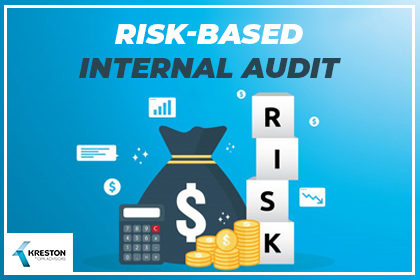
Internal auditing plays an important role in the corporate governance of an organization. Over the years, risk management has emerged as a significant aspect of internal control. Risk-based internal auditing is a concept that puts internal auditing’s work in context with the organization’s risk management framework. Risk-based internal auditing or RBI Aassures the management or board that the risk management processes are working to manage risks effectively – as per the organization’s risk appetite.
Even though identifying risks is the responsibility of the management, risk-based internal auditing supports this function by evaluating and quantifying critical risks. Business risks that may hamper the achievement of business objectives need close and continuous monitoring. RBIA is evolving rapidly and based on the organization’s attitude to risk – the implementation may be unique to each business.
Here is a look at the key points to consider when conducting a risk-based assessment –
- Understanding Business Objectives vis-à-vis Business Risks
Risk-based auditing revolves around the organization’s strategies, goals, and objectives. Internal auditors should have a clear view of the business objectives, strengths, weaknesses, and industry trends. This will help them identify the critical risk areas, pertaining to the legal framework, IT, compliance, or technology, etc. This facet of RBIA also involves assessing the company’s preparedness to respond to unexpected changes in the business environment.
- Collaboration with the Management
From the get-go, risk-based auditing is a collaborative effort between the management and the internal auditing team. The organization’s leadership needs to take full involvement in the risk assessment to determine the risk tolerance and to mark the right risk thresholds. Regular discussions among the management and internal auditors help maintain transparency and result in an audit system that is optimally focused on the right risk areas.
- Defining the Organization’s Risk Tolerance & Appetite
One of the key factors to define under risk-based internal auditing is the risk appetite of the organization. Internal auditors must determine the acceptable risk levels in the business and the risk exposure the management is willing to take. When auditors clearly understand the management’s risk tolerance levels, they can identify control gaps according to risk thresholds and implement controls wherever required.
- Analyzing the Risk Likelihood & Impact on Organization
Analyzing the likelihood of business risks to materialize and the management’s ability to counter these risks is an important step in risk-based internal auditing. Define risk impact in both quantitative and qualitative terms. This helps auditors understand the effectiveness of risk control processes and whether or not the business strategy involves a strong focus on critical risk areas. Risk assessment parameters should be defined based on the organization’s attitude to risk.
Advantages of Risk-Based Internal Auditing –
- Allows the management to identify, assess, and define a response to potential business risks according to the risk tolerance levels of the organization.
- Helps the management define responses to business risks that are effective and within the risk appetite of the organization.
- Defining control gaps where the risk is beyond the threshold, and taking immediate action to remedy the business risk.
- Assists the management in monitoring the risk management processes to check for the effectiveness of responses and completion of the required action for countering the risks identified.
- Transparency and accurate reporting of business risks, response to risk, and actions taken.
On account of their knowledge of risks and controls, internal auditors can provide the management with key insights on critical risk areas. The reports provided by a risk-based internal audit help the management to get timely information and valuable advice on the best response. A risk-based internal audit is pivotal to business performance, operational efficiency, compliance, and business growth.



